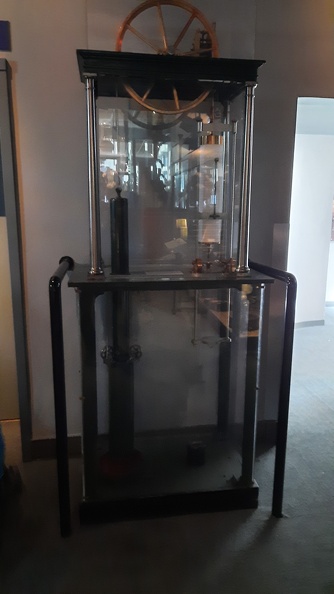Barograph
Also known as the King's Barograph
"In 1862 a "self registering barometer", designed by Alfred King, an engineer and inventor of the Liverpool United Gaslight Company, and build by a local firm, J.G Lancaster, under the close supervision of Mr. King, was installed at the Observatory. Its design was simple - a green cylinder floated in a circular tank of mercury. As the mercury expanded and contracted due to the variation of atmospheric pressure, the drum moved up and down and a pen attached recorded the movement on a rotating drum. By modern standards the barograph was very large - about 2.5 metres high and about 1.5 metres wide. The King's barograph was moved to the new Observatory on Bidston Hill in 1866, and continued in use till 1928, when it was replaced by a second King's barograph. The second instrument became inefficient in 1940, and was replaced by a micro-barograph from Short and mason. The original barograph is on display in the Liverpool World Museum, and its successor was accepted for display at the Science Museum in South Kensington, London.[1]
- ↑ Bidston Observatory, the Place and the People. Joyce Scoffield. Countyvise limited. 2006
